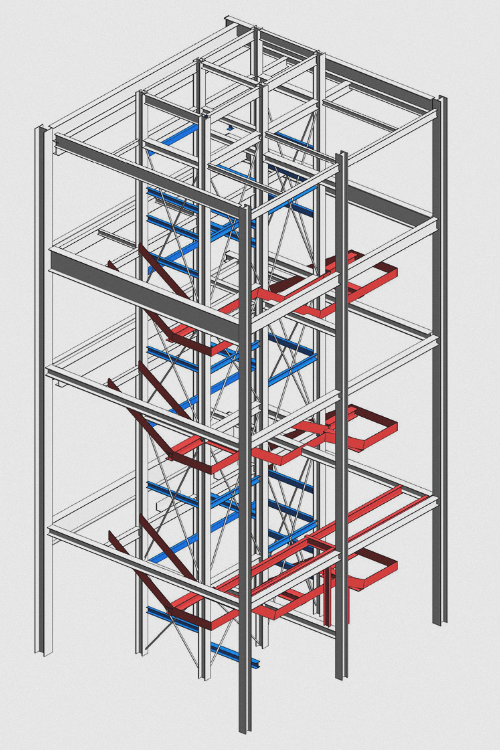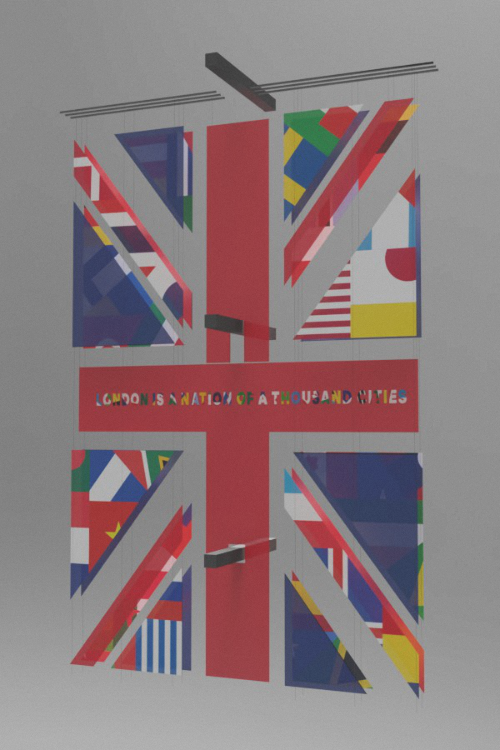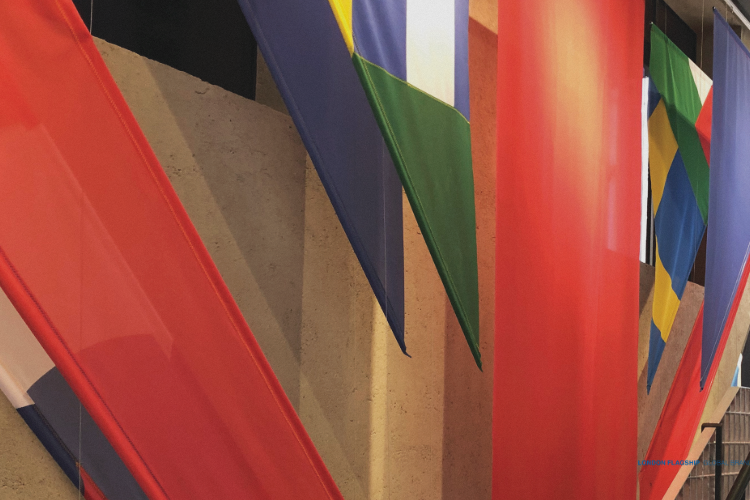my work
on ______ installation.
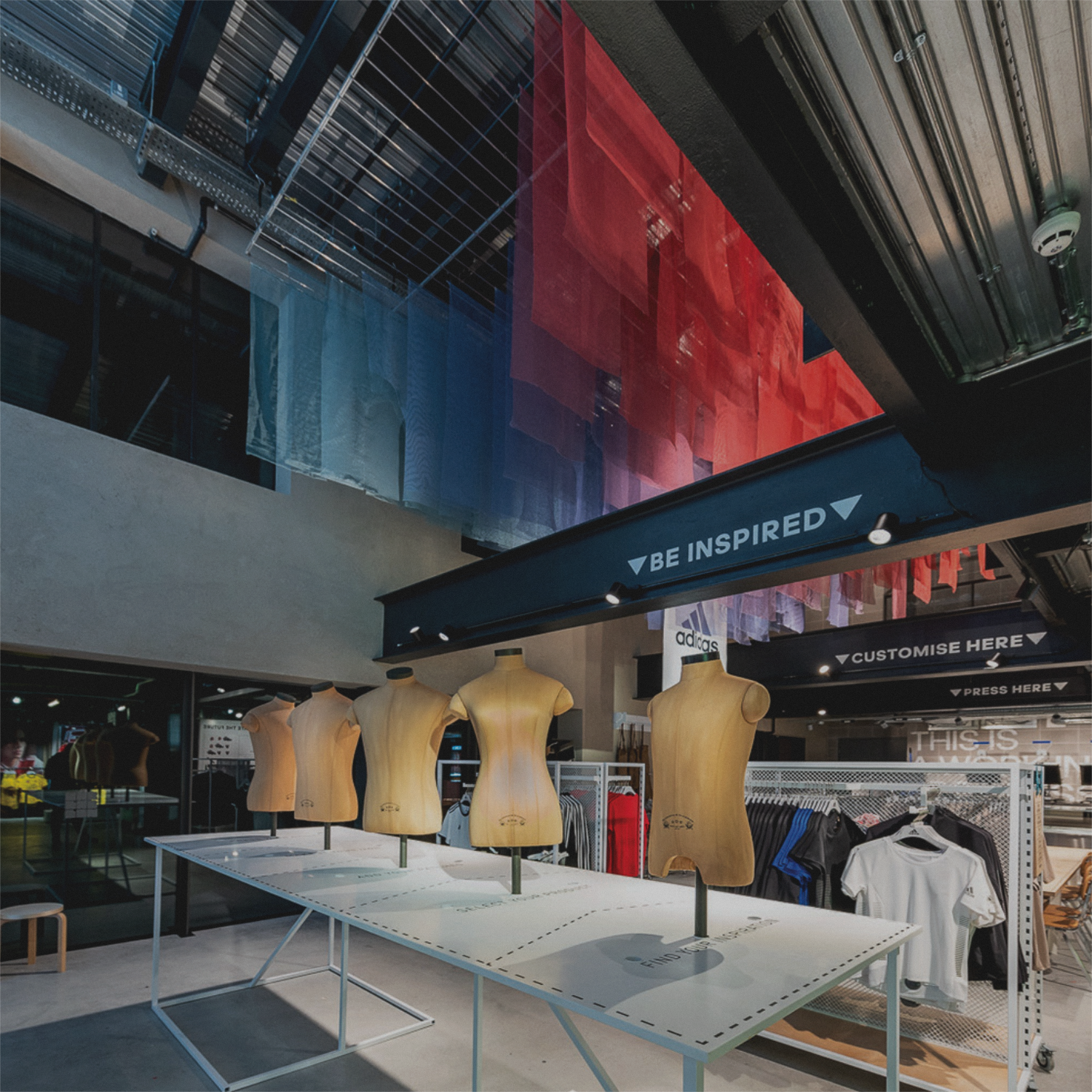
a store ______ a gallery.
They're just different environments. In galleries, people have an almost reverent attitude; they know not to touch. In stores, customers want to touch everything, and they should be allowed to; invited even.
I have experience balancing these two conflicting demands, among others, when it comes to incorporating art in spaces. Below are a few case studies.
The Maker Lab Void Installation
Should evoke the bespoke patterns that hang from the ceilings of London tailorshops, while showing a clear connection to street culture by being executed by an artist from the scene.
...O.K.! Nice brief. Beautiful concept. How do we get it produced when the selected artists are already booked up for the whole time before opening? Approved by the Fire Marshall? Colors on brand? Oh - and the pattern shape and layout isn't final? No Problem. We'll figure it out as we go.

So we sourced a fire-rated material that we could print as the first stage in a design-build process. I learned long ago to work the result backward, organizing tasks by dependency with a view to production speed. First decision to be made: the color run.
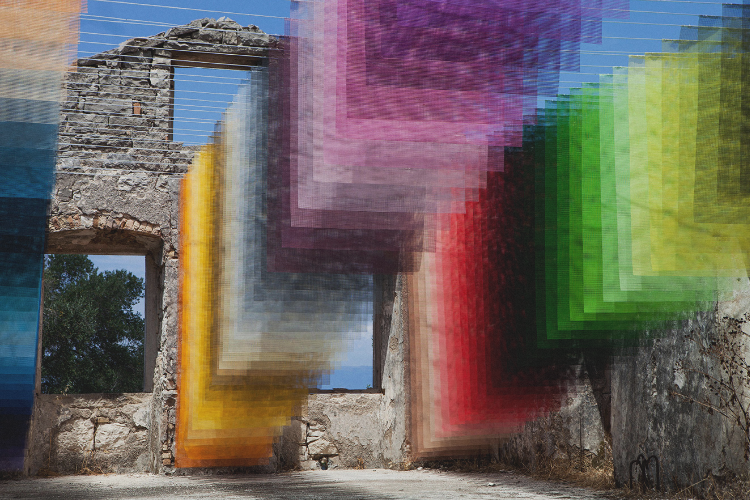
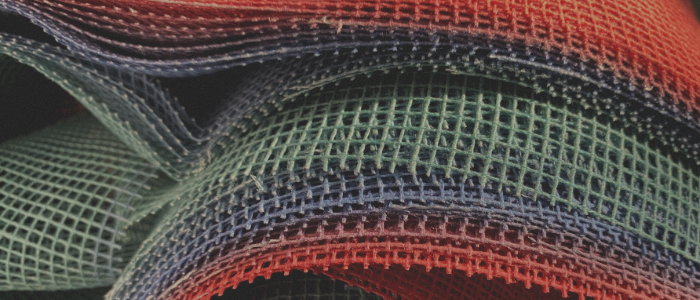
With an approved color run and print sample, we produced large sheets. That allowed us to stall the decision about panel shape for a few extra days.
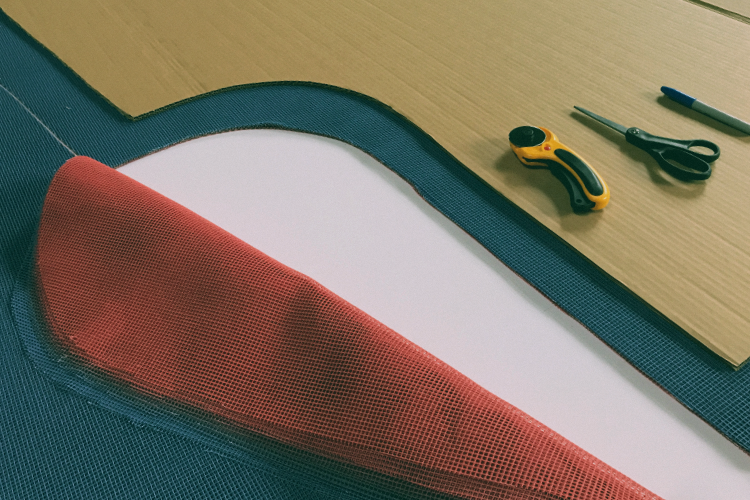
Finally we created a sub-structure for mounting the panels with moveable elements, so that final decisions on the layout of the panels could be pushed back and iterated digitally until all stakeholders were satisfied.
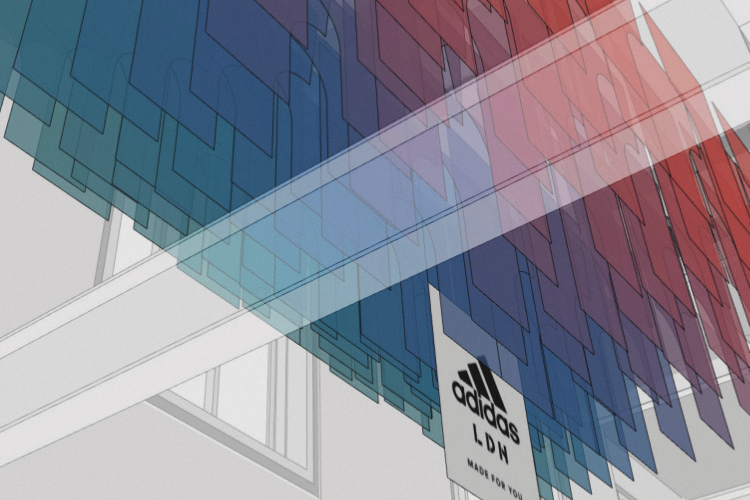
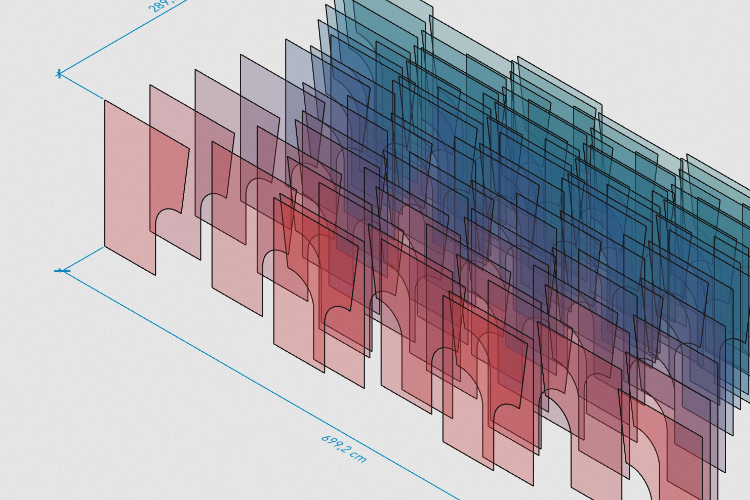
The final installation connected the framework to a motorized lift system so the panels could be replaced or re-configured seasonally as desired.
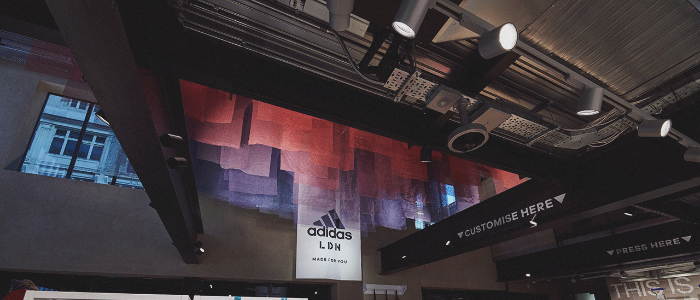
Union Jack
To celebrate London's diversity and simultaneous unity, the adidas team created the slogan "london is a nation of a thousand cities" and created the concept for a union jack, divided into three layers (always three with them, eh?) and made up of a patchwork of other nations' flags.
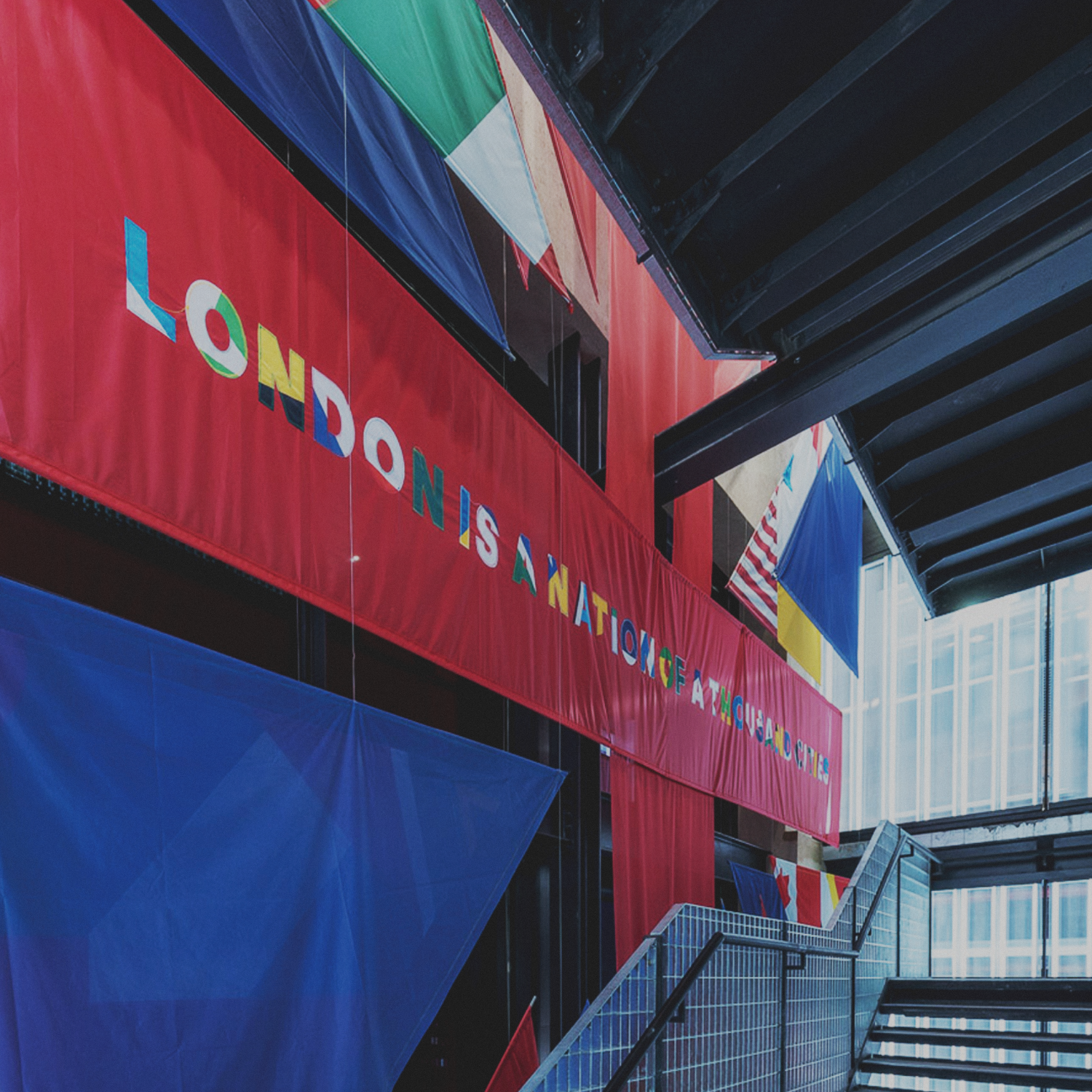

Cutting up actual flags would be costly, wasteful, and possibly offensive, so we printed the portions we needed on flame-retardant fabric and sewed them together into panels.
The major challenge was creating a measured drawing for doing work in mid-air, hanging a 6 meter flag that's made up of 45 different pieces inside a stairwell void that's pierced by crossbeams in three places.
